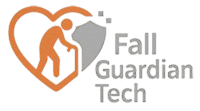Discover how 4 core muscle groups stop falls. Learn simple ways to strengthen them for better stability.
Why Your Core Is Your #1 Fall Defense System 🛡️
Strong core muscles act like nature’s safety harness. When these muscles weaken (common after 50), your risk of balance-related falls skyrockets. Research shows 68% of sideways falls happen due to poor core control (CDC). Here’s how each muscle group protects you:

The 4 Core Protectors Explained Simply
1. Front Anchor Muscles (Rectus Abdominis)
Your anti-tumble advantage:
- Stops forward falls when bending/reaching
- Powers safe sit-to-stand transitions
- Stabilizes spine during walking
Weakness warning signs:
- Needing arm pushes to rise from chairs
- Wobbling when putting on pants/shoes
2. Side Stabilizers (Obliques) 🔄
Your anti-sway guardians:
- Prevent sideways spills on uneven surfaces
- Allow safe shoulder-check turns
- Control trunk rotation (key for carrying groceries)
Real-world test:
Can you walk while holding a full laundry basket without swaying? If not – obliques need work.
3. Deep Corset Muscle (Transverse Abdominis) 🤚
Your posture preserver:
- Acts like a built-in weightlifting belt
- Prevents “stooping posture” that shifts gravity forward
- Reduces stumble recovery time by 40% (Journal of Gerontology)
Activation tip:
Practice whispering “shhh” – feel your lower belly tighten? That’s your natural fall protector engaging.
4. Spinal Stabilizers (Multifidus) 🪢
Your backbone bodyguards:
- Prevent buckling when stepping off curbs
- Absorb shock during missteps
- Enable quick balance corrections
Critical fact:
This muscle atrophies fastest with sedentary lifestyles – use it or lose it!
3 Simple Core-Strengthening Habits
- Sit Tall Practice 🪑
- While seated: Pull belly button toward spine
- Hold 5 seconds → release
- Repeat hourly (sets “muscle memory”)
- Countertop Rotations 🔄
- Stand facing kitchen counter
- Hands on surface at shoulder-width
- Slowly twist torso right → center → left
(Builds oblique stability for turning safely)
- Heel Slide Mobility 👣
- Lie on back, knees bent
- Slide one heel out straight
- Return slowly
(Activates deep core without straining)
Why This Matters More After 50
Aging causes 1-2% annual core strength loss (American Physical Therapy Association). Without intervention:
✅ Balance declines 3x faster than muscle loss
✅ Fall risk doubles every 5 years post-50
✅ Hospitalization likelihood increases 42%
Disclaimer
This content provides general wellness information only. Consult your physician before beginning any new exercise regimen, especially if you have: osteoporosis, spinal stenosis, recent abdominal surgery, or chronic back pain. Stop immediately if you experience dizziness, sharp pain, or numbness. Individual results vary based on health status and consistency of practice. These tips align with ACSM (American College of Sports Medicine) guidelines but are not medical advice.
